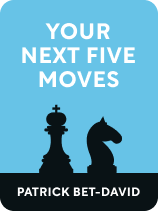

This article is an excerpt from the Shortform book guide to "Your Next Five Moves" by Patrick Bet-David. Shortform has the world's best summaries and analyses of books you should be reading.
Like this article? Sign up for a free trial here .
When you encounter a problem in your business, what do you do? Do you have a process to solve it?
Entrepreneur Patrick Bet-David argues that effective business problem-solving must be part of your strategy for long-term success. He outlines three steps to get to a solution: take ownership of the problem, identify the core problem, and solve the problem with cost-benefit analysis.
Keep reading to get a handle on these three steps.
Business Problem-Solving
Good business problem-solving distinguishes a beginner from a master, and it is critical for success. Here’s how Bet-David defines good problem-solving: the ability to consider all of the options, anticipate the possible consequences of each option, and make advantageous evidence-based decisions. The better you get at problem-solving, the more success you’ll have because you’ll learn how to prevent problems in the first place.
(Shortform note: Bet-David’s definition of good problem-solving is detailed and exhaustive. However, he doesn’t mention one important reason why learning how to problem-solve is useful: Solving problems makes you happy. In The Subtle Art of Not Giving a F*ck, Mark Manson argues that solving problems is intrinsically satisfying and improves your life. Instead of trying to live a life without problems, Manson contends that you should focus on only solving good problems—ones that have a clear solution and that will noticeably improve your life.)
Step 1: Take Ownership of the Problem
To solve a problem, see yourself as an active agent in it, stresses Bet-David. Consider how you might have contributed to the problem and take ownership of the solution. This allows you to learn from mistakes and improve as a result of them.
(Shortform note: In Extreme Ownership, Jocko Willink and Leif Babin take the idea of responsibility for problems to another level: They claim that to become an exceptional leader, you must take responsibility for even your employees’ problems and errors because it’s your responsibility to prepare and train them well.)
Step 2: Identify the Core Problem
You must identify the core problem you need to solve. Often, says Bet-David, the problem you think you have is merely a symptom of a deeper problem that might be hidden. If you want a real solution, you must figure out the real problem.
Identify your core problems by asking “why” questions about the problem until you can’t distinguish a further cause for it—this is the core problem. For example, you might note that you’re receiving complaints about your customer service. Why? Because the department is understaffed. Why? Because customer service agents take lots of time off. Why? Because they aren’t happy with their hours and benefits. Why? Because they need more stable hours and better benefits to have a sustainable lifestyle. You’ve thus identified the core problem.
(Shortform note: Bet-David recommends asking specific questions to get to the core of a problem, but if you get stuck, you may need to switch between focused and broad thinking. In A Mind For Numbers, Barbara Oakley argues that you solve problems most effectively when your brain toggles between focusing on the details of the problem and stepping back to see the problem in a bigger-picture context. Take a break and focus on something else for a while to activate this big-picture mindset.)
Part 3: Solve the Problem With Cost-Benefit Analysis
The last part of problem-solving is to devise three possible solutions to the problem you’ve identified and calculate the investment cost, time cost, and benefits each solution offers, writes Bet-David. Then, compare the calculated costs and benefits of each solution and pick the one that offers the most benefits for the lowest cost.
(Shortform note: Bet-David recommends investigating three possible solutions to the problem you’ve identified. However, it might not always be worth immediately pouring that much time and energy into solving a problem. in The Lean Startup, Eric Ries writes that you can instead apply smaller, incremental fixes to a problem. Such an iterative approach is best applied the first time you encounter a problem because it allows you to learn about a problem you don’t have much information on. You may find that it takes much less effort to fix than you initially assumed.)

———End of Preview———
Like what you just read? Read the rest of the world's best book summary and analysis of Patrick Bet-David's "Your Next Five Moves" at Shortform .
Here's what you'll find in our full Your Next Five Moves summary :
- What distinguishes exceptional business leaders from average ones
- The five strategic steps you must start taking for long-term success
- How to track your business' growth metrics






